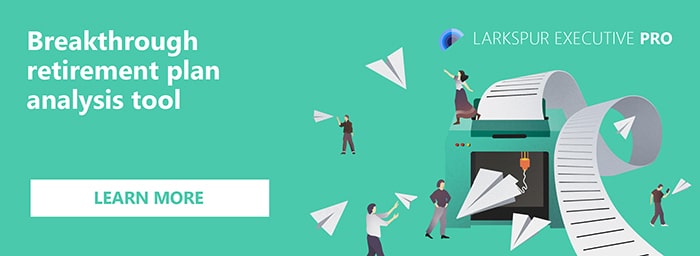- About the Higher Education Study
- A similar study by Transamerica
- Expanding financial wellness offerings is a top priority
- Opportunities to improve plan health through support offered by plan providers, consultants and advisors
- Reach out to prospects in specific industries like educating using RiXtrema’s larkspur executive.
Plan sponsors can respond by simplifying fund menus and providing access to professional help; many are already using managed accounts.
A recent study on higher education plans from Voya found 43% of plan sponsors say motivating employees to save adequately and invest wisely are the top challenges in helping their employees prepare for retirement.
About the Higher Education Study
implications from a survey of 297 key retirement plan decision makers in higher education. The online survey was conducted July 22 through September 11 of 2020 in collaboration with Greenwald Research. Respondents included decision makers from public (44%) and private (56%) higher education institutions that offer a retirement plan, such as a 401(k), 403(b), 457 or defined benefit plan, cross plan sizes: small (500 or fewer plan participants), mid-sized (500-4,999 plan participants) and large (5,000 or more plan participants).
Higher education institutions face unique challenges when it comes to the management of their retirement plans, including increasingly complex plan administration that may involve overseeing multiple providers, understanding complicated and ever-changing compliance and testing requirements, selecting investment options for plan participants, and if the plan is subject to ERISA, juggling fiduciary responsibilities—all while helping faculty and staff plan for the future they envision.
A Similar Study by Transamerica
Interestingly, a separate study from Transamerica found more than half (59%) of higher education institutions view motivating faculty and staff to save adequately for retirement as their greatest challenge in managing their retirement plan. Forty-seven percent said it was helping participants invest wisely.
According to the Transamerica survey, nearly three out of five institutions (59%) say they’ve seen increased demand for investment and in-plan retirement income opportunities, and 26% report an increased need for access to professionally managed accounts due to the effects of COVID-19.
“I think the COVID-19 pandemic further highlighted the main issues that have historically concerned plan sponsors about helping employees achieve optimal retirement outcomes,” says Wendy Daniels, vice president, not-for-profit practice leader for Transamerica.
Plan sponsors should make sure their fund lineups are relevant for faculty and staff, including by having options that are appropriate for the savings phase and the withdrawal phase, Daniels suggests. “There should be an appropriate mix of options that include TDFs [target-date funds], and the investment lineup should be simplified.”
Daniels says investment decisions are challenging for participants, so making their choices easier is key to helping them invest wisely. She adds that this is where managed accounts can help.
Expanding Financial Wellness Offerings is a Top Priority
Financial wellness programs in higher education are becoming more comprehensive and inclusive. The majority (74%) of higher education institutions offer a financial wellness program with robust features that focus on planning for retirement, investing and budgeting. Plus, a majority of them plan to expand their programs to include assistance for caregivers and employees with special needs and disabilities, debt management, advisory support through one-on-one counselling or online tools and calculators.
- 51% want help from providers with “improving the overall financial wellness of employee population.”
- 53% plan to offer an “assistance with debt management” component as part of their financial wellness program in the next 3 years.
- 42% say “the cost of the program” is a key challenge in offering a financial wellness program.
With the majority of higher education plan sponsors using a single plan provider and continued consolidation expected among those with multiple providers,
Opportunities to improve plan health through support offered by plan providers, consultants and advisors
there is an opportunity for higher education institutions to lean on plan providers, consultants and advisors to help improve plan health.
- Among those currently using multiple plan providers, about six in ten say they are somewhat likely to reduce the number of providers.
- More than eight in ten higher education sponsors are satisfied with plan provider effectiveness in helping their organization achieve retirement plan goals.
- 88% of higher education institutions rely on the services of a plan advisor or consultant. About half of plan sponsors that currently rely on a plan advisor or consultant engage them to provide holistic financial planning.
Brodie Wood, senior vice president and national practice leader for education markets at Voya Financial says some investment choices higher education institutions use in their retirement plan fund lineup, such as those that provide guaranteed retirement income, are complex to understand.
“There’s a need for one-on-one guidance to understand these investment solutions and whether they’re right for a participant,” he says. “That is a key way to motivate employees to keep saving and invest wisely for certain demographics.”
Having an in-person representative may come at a cost, but the more paternalistic the plan sponsor, the more likely it is to make the investment, which will help disadvantaged segments of employees, Wood says. The more tech-savvy participants will be comfortable with online advice.
Reach out to prospects in specific industries like educating using RiXtrema’s larkspur executive.
Larskpur executive was designed with the specific purpose of providing you with all the tools that you may need to prospect clients in specific industries as well as sending customized marketing campaigns in batch to broadcast your services to potential clients.
Click here to get your free demo of Larkspur Executive today.




